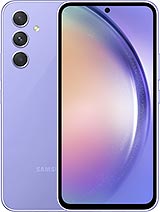Poco X6 Pro review

MIUI turns Hyper, Android 14 underneath
The Poco X6 Pro is the first phone we get in the office that runs on Xiaomi's newly rebranded Android overlay, now called HyperOS, out of the box. The Poco X6, for example, showed up still on MIUI, though it's promised to get a HyperOS update 'as soon as possible'. Some other devices, like the 13T Pro and the 13 Pro just got their updates, but that doesn't change the X6 Pro's status as 'first'. The underlying Android version is 14, so the Poco's software is about as recent as it comes.
Now, if you've seen any Xiaomi phone in recent years, you'll still be able to easily find your way around the Poco X6 Pro, though it will also help if you've encountered Pocos, because some of the app icons are brand-specific. A few of the Hyper-related changes are universal, though, and we'll have a look at some right about now.

One of the major changes is in the Control center which is now redesigned to remove the text labels of the icons. If you're not familiar with which icon does what, you may toggling the wrong thing on the first few tries, particularly for settings you access less frequently. The labels do appear in the menu where you can rearrange the icons, so you can at least look up the names every now and then. Mind you, there's no old-school combined interface for quick settings and notifications on the Poco X6 Pro - it's two separate panes, and that's that.




Control center • Control center settings • Notification shade • Settings menu
MIUI has always been very customizeable, and HyperOS builds on that with further options for personalization of the lockscreen. Several types of designs are available, each with its own distinct clock style and an always-on display style to match.
You may have picked up on it already, but let's mention it - HyperOS comes with a new system-wide font. It could have been named HySans instead of MiSans, but it's not our call.
Also tweaked is the multi-window interface, with new buttons and somewhat more intuitive operation. The Task switcher on the Poco only gets the two-column vertically scrollable interface, while Xiaomi phones can still opt for a more classic horizontally scrollable layout.
A HyperOS addition is an option for large folders, and there's not just one type, but two - Enlarged and XXL.
The default homescreen arrangement features an app drawer, though you could opt for a single-tiered UI with all your apps on the homescreens. That's yet another instance of 'will this Poco have it?' - oftentimes in the past Pocos didn't have both options.






Homescreen • App drawer • App drawer • Large folders
Naturally, there's a host of in-house apps for doing this or that. There's a Gallery, a Music player, a Videos app, a File manager, a Security app, as well as the Mi Browser. Also included is the Mi Remote app, to make use of the IR emitter on the X6 Pro.






Gallery • Music • Videos • File Manager • Security • Mi Remote
There's a gaming utility too - Game Center/Game Turbo has the usual set of features for limiting interruptions while gaming, as well as screen capture and an fps counter.
Benchmarks and performance
The X6 Pro is powered by the Dimensity 8300-Ultra - a Mediatek chip built on a 4nm process that so far appears exclusive to the X6 Pro and its alter ego, the Redmi K70E. The SoC features an octa-core CPU with four big Cortex-A715 cores (1x3.35GHz + 3x 3.20GHz) and four Cortex-A510 cores (4x2.20GHz). The GPU is Mali-G615 MC6.
Memory configurations for the X6 Pro include 8GB/256GB and 12GB/512GB (as is our review unit).

As is all too often the case with Xiaomi phones we receive a little early, the Poco X6 Pro wasn't willing to run our full suite of benchmarks. We did get to run GeekBench and Antutu, so we do have some numbers for you.
With specs like those above, it's no wonder that the Poco X6 Pro is essentially unrivaled in benchmarks, among more or less similarly priced handsets. Only a Pixel 7a might have something to say under sing-core CPU load, but that's about it.
When it came to sustained load, the X6 Pro exhibited gradual rampdown in performance and around 20minutes an hour-long run of the CPU throttling test, it was able to settle at around 80% of its initial result. Pretty impressive. That was in Balanced battery mode, though, as opposed to Performance mode. In performance mode, it posted a higher initial result, but slightly shakier behavior down the line, though the 71% result in the test isn't too bad either.
Reader comments
- Anonymouse
- 27 Feb 2025
- Emn
I could understand your troubles. In fact, I charged mine as well before 4 times a day for the next few weeks. Inquired online why this uses up a lot of battery but the reason behind it is that the phone wants to know your usual use of the ...
- Anonymous
- 24 Feb 2025
- fp{
Its been 4 days since i had this phone, while its very fast and charges up quickly it not only heats up a lot especially around the cameras but it loses charge pretty fast which is very very frustrating and i have to charge it up at least thrice a da...
































